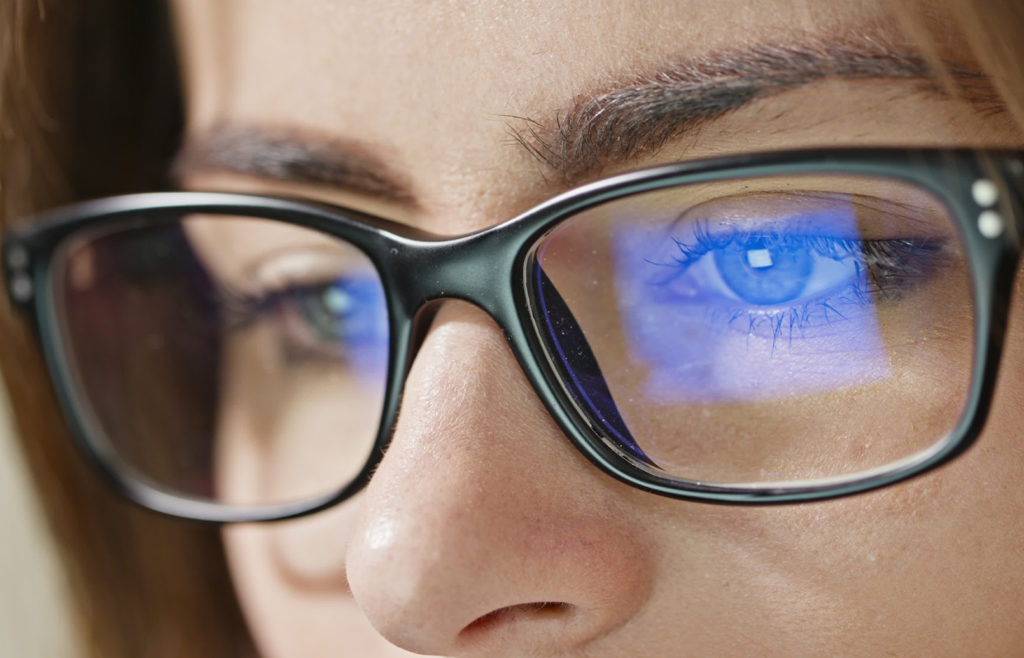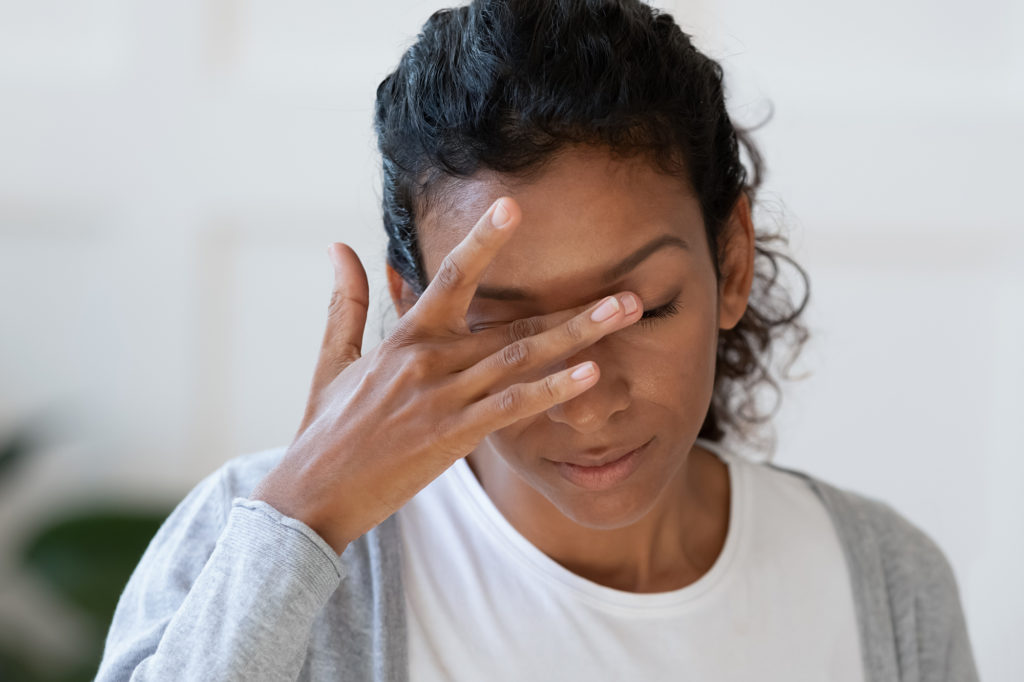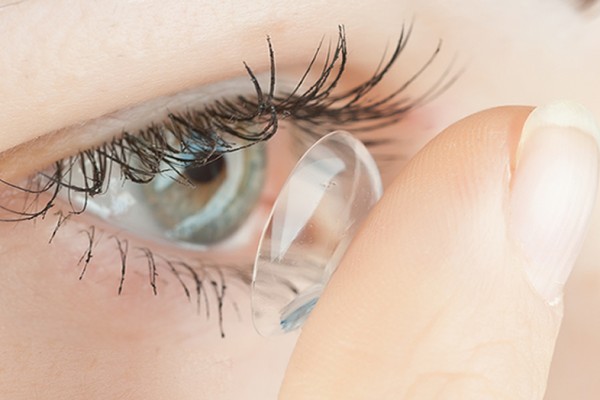This post is also available in:
![]() Français (French)
Français (French)
Have you ever experienced an eye twitch? You’re going about your day and then there it is – that weird little spasm and suddenly your eye is twitching uncontrollably, out of nowhere.
If you’ve ever experienced this, you’ve probably rubbed your eyes, opened them wider, pulled down your eyelids, made all sorts of funny faces… but you can’t seem to make that twitch go away.
We’re here to get to the bottom of that pesky problem. Let’s talk about why your eyes twitch and what to do about it.
Please understand that this article intends to be a helpful resource, but it is never a substitute for professional medical advice from a qualified health care provider. If you’re concerned about eye twitching, seek your doctor immediately.
- Types of eyelid spasms
- Causes of eye twitching
- Eye twitch treatments
- When to seek medical attention for eye twitching
What is eye twitching?
There are three different types of eyelid spasms that vary quite a bit in severity:
- Occasional eyelid twitch (eyelid myokymia)
- Frequent eyelid twitch in both eyes (benign essential blepharospasm)
- Frequent eyelid twitch in one eye (hemifacial spasm)
Occasional eyelid twitch

A general eyelid twitch, also medically known as eyelid myokymia, is the most common type of eye twitch. Basically, you sense that a small part of one of your eyelids (in either the upper or lower lid) is flickering gently.
It happens to most people when the nerve that’s controlling the eyelid gets excited temporarily and it goes away on its own after a while, just like any other muscle spasm that occurs in the body. It’s not a big deal if it happens to you from time to time and there are many reasons why it might occur (more on that below).
Frequent eyelid twitch in both eyes
Benign essential blepharospasm is more serious than myokymia because it involves the muscle that controls the eyelid. It forces your eyelids to close entirely so that you’re unable to open your eyes. It occurs most commonly in middle-aged and older adults (predominantly in women).
Initially, blepharospasm might feel as if you’re blinking a lot in one eye before it gradually increases in severity and lasts a few hours. When blepharospasm progresses to both eyes, it can affect your eyesight. As well as being frustrating and irritating, it becomes a safety issue.
Symptoms can include:
- Eye irritation
- Increased blinking
- Dry eyes
- Involuntary winking or squinting
- Increased difficulty keeping your eyes open
If any of these symptoms bother you continuously, it’s time to discuss it with your doctor or eye doctor.
Frequent eyelid twitch in one eye
Hemifacial spasm is a rare condition that involves muscle spasm on one side of the face, usually on the left half of your face. This type of spasm happens when the nerve that’s controlling either side of your face is irritated.
At first, it feels like a twitch in one eyelid before the entire side of the face area is affected.
This condition is more prevalent in middle-aged and older women and can be uncomfortable, affecting all aspects of life.
Symptoms can include:
- Increased eyelid spasm (often a first symptom)
- Increased difficulty keeping your eyes open
- Tear formation
- Twitching on the same side of the face area, including the eyebrow, cheek, mouth area, chin, jaw and upper neck
If any of these symptoms bother you continuously, discuss it with your doctor or eye doctor.
Causes of eye twitching

Eyelid spasm can be aggravated by a huge variety of causes and if you experience the latter two types above or constant eye twitching, it’s best to seek medical advice. Some of these triggers include:
- Stress
- Vision-related stress, such as eye strain, dry eyes, eye irritation or light sensitivity
- Physical stress, such as migraine, fatigue, lack of sleep, or exercise
- Environmental stress, such as bright lights, sunlight, wind or air pollution
- Caffeine, tobacco or alcohol intake
- Side effects of certain mental health medicines (talk to your doctor if it happens)
- Eye inflammations, such as uveitis, blepharitis, conjunctivitis, or pinkeye
In extremely rare cases, eyelid twitching may be one of the symptoms of more serious, chronic health conditions in the brain or nervous system, which usually have other symptoms as well. It could coincide with one of the following conditions:
- Parkinson‘s disease
- Brain injury, such as stroke or inflammation in the brain cells
- Dystonia, a movement disorder
- Multiple sclerosis
- Hemifacial spasm
- Bell’s palsy
If you’re concerned about eye twitching, it’s best to seek advice from your doctor.
Eye twitch treatments

Most temporary eyelid spasms disappear in a short period of time without treatment. However, you can try to soothe it or minimize it with the following:
- Wear blue light glasses during screen time
- Lubricate your eyes with eye drops
- Apply hot and cold compress to your eyes
- Reduce caffeine or alcohol intake
- Avoid smoking
- Get enough sleep
If your spasm causes problems, your doctor may suggest medicinal options depending on the severity.
When to seek medical attention for eye twitching

Eyelid twitching occurs when the nerves and muscles surrounding your eyes are in an over-excited state. If your twitching keeps bothering you from going about your daily routine, or if you’re having severe twitching with any of these symptoms, it’s best to see your doctor:
- Red eyes, swollen eyes, or an unusual eye discharge
- Droopy eyelid
- Forceful eyelid closure that lasts for a few seconds, minutes, or even hours
- Eyelid spasm that lasts for several weeks
- Facial spasm
- Eye-related injuries
There are some key details you’ll need to discuss with your doctor, including when it started, how often the twitching happens, which eye is affected and any other associated symptoms.

Do you spend lots of time in front of screens? Slip on a pair of blue light filtering glasses to protect your eyes.
Has it been more than two years since you had your eyes checked? Book an eye exam at a Clearly store near you or visit us in store today to ensure healthy eyes and good vision!
Read more:








































